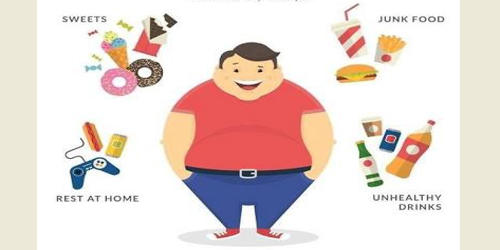Obesity a Heightening Problem
Obesity is a chronic health condition in which the body fat reaches an abnormal level. The accelerating rate of obesity among Asians, especially children, is indeed alarming. Overweight and obesity are defined as abnormal or excessive fat accumulation that may impair health. If left unchecked, it will soon become the major cause of preventable death. The fundamental cause of obesity is an energy imbalance between calories consumed and calories expended. Once obesity develops in childhood or adolescence, there is an increased chance that it will persist into adult life, and that is why it is important for overweight people to lose weight. Obesity is linked to physical and psychological ill-health and premature death.
Childhood obesity is associated with a higher chance of obesity, premature death, and disability in adulthood. The phenomenal increase in the levels of obesity among children can be attributed to unhealthy eating habits. It occurs when we consume much more amount of food than our body really needs on a daily basis. The food we eat is extremely high in calories and fat, and more often than not, children tend to prefer processed foods over fresh foods. Moreover, more and more people tend to eat out at restaurants and fast food outlets nowadays. There are numerous vending machines in many schools selling carbonated drinks, while school canteens offer students unhealthy food choices.
Obesity has become a big concern for the youth of today’s generation. Today, as a result of technological advancements and conveniences, we tend to be inactive and lead sedentary lifestyles. Children spend hours in front of televisions and play computer games. Many children are not active enough to use up the energy provided by the food they consume. The many conveniences which are available such as elevators, cars, and the Internet reduce the level of physical activity. The lack of physical activity means fewer calories are being burned, leading to weight gain and obesity. The lack of physical education classes in schools for children further compounds the problem.
Obesity has many attendant risks and effects. If you think that the bulging mass of fat under your arms or in your belly, thighs, and other parts of your anatomy is the only effect of obesity, then you are sadly mistaken. Obesity is not merely a cosmetic problem that denies you the pleasure of looking smart and fit. It is a health hazard that puts you at risk of developing various life-threatening diseases. It can lead to sudden death, heart attack, diabetes, and may unwanted illnesses. Many serious medical conditions have been linked with obesity, including heart disease, high blood pressure, diabetes, cancer, and stroke. But in addition to increased future risks, obese children experience breathing difficulties, increased risk of fractures, hypertension, early markers of cardiovascular disease, insulin resistance, and psychological effects.
A person would be said to be obese if his or her body mass index is beyond 30. The best way to avoid obesity and its effects are to maintain a healthy weight through healthy eating habits and regular exercise. Children should avoid eating fast food and junk food. They should also exercise regularly and be active throughout the day. At the same time, they should avoid watching too much television or using the computer for hours at a stretch. So it is wiser to exercise daily and maintain a healthy lifestyle rather than being the victim of obesity.
Children must realize that if they take in more calories than they burn, they will gain weight. On the other hand, if they burn more calories than they ingest, they will lose weight.
















